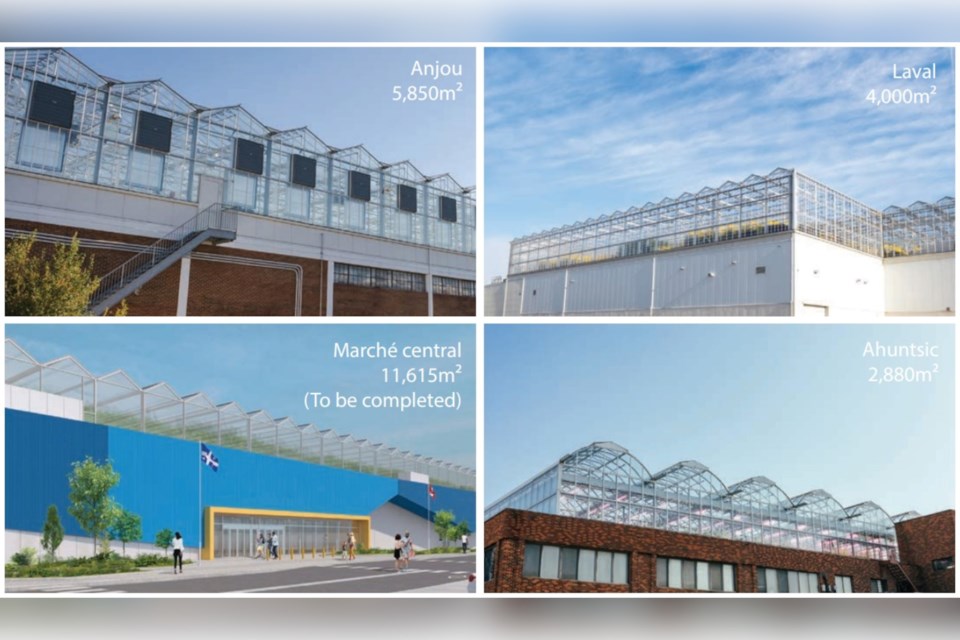A bird’s eye view of Greater Sudbury reveals a series of blank canvases on the vast majority of rooftops, with various types of roofing squandering the sunlight plants use for photosynthesis.
Meanwhile, an estimated 31,000 Greater Sudburians are living with food insecurity, which climate change and socioeconomic challenges have been exacerbating.
For local intern architect Michael Sirois, this presents a unique opportunity and a solution: rooftop hydroponic greenhouses.
And what better showpiece/starting point is there, he asked, than the new $200-million downtown arena/events centre slated to open by May 2028?
“Once I heard that a new arena was proposed, I thought, there’s going to be a lot of roof on that arena,” he said. “It seems to me that we should be making an effort to include this on anything that’s new.”
Sirois has been exploring the topic of food insecurity’s link to architecture for several years, and has been digging deep into the topic for the past two years while drafting a master’s thesis on the topic with Laurentian University’s McEwen School of Architecture.
His thesis, titled “Cultivating Resilience: Architecture and Urban Design for a Local and Circular Food System in Sudbury, Ontario,” was defended on April 11, and accepted.
Although the thesis tackles various options for Greater Sudbury, and prompted the creation of a website promoting the concept of growing local food, the concept of rooftop greenhouses is one Sirois said the city should seriously consider with their downtown arena project.

Now’s the time to do it, he said, as the design stage is the best time to consider adding structural capacity to accommodate the added weight. Although hydroponic systems can be less heavy than soil-based systems, he said it’s still additional weight that needs to be factored into the design.
“Our roofs are designed so we can hold an excess amount of weight for snow ... but once you start adding in glass and metal for greenhouses, it does get a bit heavy,” he said.
Sirois envisions the new downtown arena as serving as a very public example that rooftop greenhouses can work.
“If the City of Greater Sudbury can show this is an honest-to-goodness feasible aspect to food production,” he said it might set a precedent for businesses to follow suit with their own ventures.
“I envision this thing as being more an opportunity to teach and demonstrate that this is a possibility.”
In his master’s thesis, Sirois showed how other spaces, such as the multi-level parking garage on Cedar Street, which currently houses the city’s legal graffiti wall, can accommodate food-producing greenery.
In his deep dive into rooftop greenhouses, Sirois connected with the people behind Lufa Farms, whose Montreal-based operations included a 127,000-foot greenhouse on top of a newly built Walmart, which they’ve called Lufa Farms Marché Central.
“Like all our greenhouses, we aim to grow food where people live, and grow it more responsibly, using less land, less energy, less water, less waste and less resources,” Lufa Farms said on their website, of their latest greenhouse effort.
“Together with the use of hydroponic growing systems and rainwater collection, less than an acre of rooftop space can produce enough food to feed 2,000 people, all while using 50-per-cent less heating energy and up to 90 per cent less water and nutrients,” Sirois said.
As the city did with their decades-long regreening effort, which saw the 10-millionth tree planted in 2022, Sirois said Greater Sudbury can “once again show environmental leadership by demonstrating how food security can be achieved sustainably and ethically through local and circular food production.”
It’s up to governments to take action, Sirois said, noting that private industry has been driving things in the wrong direction by ramping up food prices and contributing to carbon emissions.
Approximately 80 per cent of fresh fruit and 60 per cent of vegetables are imported in Canada, and Sirois noted that he saw blueberries from Peru in a local grocery store.
“My kids pick blueberries in the bush all the time,” he said, expressing exasperation for the carbon-emitting processes used to transport fresh blueberries from Peru.
“I don’t think corporations will ever really feel like they need to sort out the fact that a quarter of Canadians aren’t able to afford groceries, or they live in a food-insecure population,” Sirois said. “That should really come down to governments.”
Sirois reached out to Mayor Paul Lefebvre’s office with his rooftop greenhouse idea, and is waiting on a response.
Sirois, 36, relocated to Sudbury with his family from Barrie two years ago to pursue his master’s thesis at the McEwen School of Architecture after working in the field for several years prior. He is now employed locally as an intern architect.
Tyler Clarke covers city hall and political affairs for Sudbury.com.




